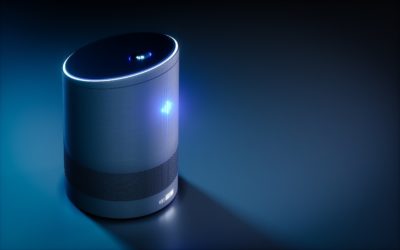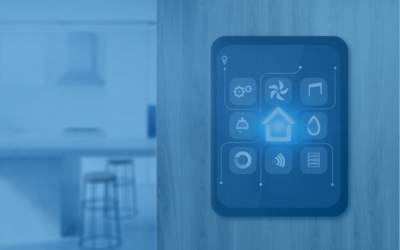Data Integrity and Privacy in Smart Cities: Standardization and Collaboration is Key
15
April 2021
by Juhi Fadia
According to the United Nations Population Fund, more than half of the world’s population now lives in urban areas, and it is predicted that approximately 66 percent of the world’s population will live in an urban environment by 2050.
Massive efforts are underway today, designed to address the consequences of this surge, which, left unmanaged, would result in climate, energy, environment, and living conditions in the cities of the future.
Citizen engagement is mission-critical to achieving true Smart Cities, which can improve the lives of those who live, work and play in modern cities, but with this comes the important resolution of data security and privacy.
Today, the physical and digital infrastructures of cities are embedded with billions of devices at the edge, part of a “layered” approach to Smart City solutions. We have already witnessed attacks, including unauthorized access to sensitive data and denial of service (DoS), which can quickly nullify the benefits of connected systems designed to support those who live in urban areas.
Even as early as 2015, nearly a quarter of a million citizens living in Ukraine suffered a long period of electricity disconnection because the power grid system was attacked by hackers.
Fast-forward to 2021, and now that many Smart City systems have been implemented, security and privacy issues have become a major challenge that requires effective countermeasures. The challenges are great when we add cameras, people counters, and other applications as traditional cybersecurity protection strategies cannot be applied directly to these given the heterogeneity and ever-evolving characteristics of smart cities.
For people to trust sophisticated Smart City solutions, we must address security and privacy threats when designing and implementing new mechanisms or systems.
We caught up this week with Avner Ziv, CEO of Cloud of Things, at the Frontier Conference, where Ziv spoke on a panel discussing the value, integrity, management, and security of big data lakes where sensor-generated information is stored and analyzed.
“Citizen concerns are very real,” Ziv said, “since, given the rapid development of information technologies including AI, machine learning, and data mining, adversaries are developing the ability to bypass the current detection mechanisms. Security and privacy are the only way to get to trust in Smart City applications, and so we are spending a great deal of time understanding and addressing the gaps.”
Ziv explained that there is no uniform IoT architecture; however, the Industrial IoT community and global ecosystem are heading in that direction. “The sensing layer is used for data collection from things, and that layer must be fully secured, from hardware and firmware to edge compute software. The network layer is the core layer in physical/digital architectures, and it must also be fully secured, whether the data is traversing the public Internet or private networks that connect smart things, network devices, and servers and ship data to the cloud through gateways.”
Ziv explained Smart City IoT as more of an Industrial IoT category, including additional layers for support, which works very closely with the application layer, and provides support for the requirements of diversified applications via intelligent computing techniques (edge, fog, and cloud).
“It is in the highest layer, the application layer, where we find the most challenges in terms of trust, as this layer provides intelligent and practical services or applications to users based on their personalized requirements,” Ziv said. “For example, a citizen within a Smart City may wish to understand and manage their energy consumption with smart meters, but they may be worried about the kind of behavioral data collected about their energy consumption at any hour of the day. We are observing a movement toward citizen engagement that enables individuals and families to contribute to carbon reduction, alongside the utilities, but are also seeing concerns about what that practically means.”
Ziv, whose company based in Israel is supporting certain government and service provider initiatives, also pointed out that smart government needs to manage data – interconnecting it across systems, institutions, digital and physical infrastructure management.
“We are seeing more and more demand for data ownership solutions – including the secure routing of data to more than one application or cloud,” Ziv said. “Citizens may trust more if they are aware that their data is not being used by special interests and that their data is being secured by government agencies on highly protected edge, network, and cloud application layers. Cloud of Things offers its customers the option to securely send data from their devices in the field directly to their private cloud tenant, while still enjoying our advanced device management features.”
Standardization and interoperability are also important areas to tackle, Ziv said. “Intelligent public transportation networks can enhance the safety, speed and reliability of light rail and traffic and parking management can benefit those who choose to use their private vehicles when they are in the city, but without a common understanding of how the collection, analysis, and activation of near-real-time systems works, natural concerns rise – for example, the government ‘tracking’ the moves of individuals and organizations.”
Ziv applauded the efforts of organizations like The Linux Foundation and their LF Edge projects which aim to build standards that will drive trust in the future. “We are already a highly connected society, and now a hyper-connected society,” Ziv said. “Only by collaboration, by bringing together public and private organizations, and by engaging individuals and businesses in the discussion can we sustainably develop solutions that provide personalized services but not at the risk of invasion of privacy and threats to freedom and democracy.”
Ziv presented at The Frontier Conference this week as part of a panel, “Data is the True Currency of Connected Industrial Solutions,” sponsored by Rocket Wagon Venture Studio and moderated by Don DeLoach. Chris Swan of Dispersive is also on the panel.
Originally published on IoT Evolution World
Similar Blogs
Cloud of Things joins the Tondo-Smart group, a leading public smart-city vendor
Ultra-Low Energy (ULE), an extension of the Digital Enhanced Cordless Telecommunications (DECT) physical layer specification that supports low power devices, is becoming an increasingly popular approach, promoted by the ULE Alliance as “a way to provide sensors, actuators and other smart devices in the Internet of Things (IoT) with two-way transmission capability over a dedicated frequency band of 1900MHz.”
DSP Group and Cloud of Things Combine Forces and Introduce a Fully Managed ULE IoT Cloud Services Gateway
Ultra-Low Energy (ULE), an extension of the Digital Enhanced Cordless Telecommunications (DECT) physical layer specification that supports low power devices, is becoming an increasingly popular approach, promoted by the ULE Alliance as “a way to provide sensors, actuators and other smart devices in the Internet of Things (IoT) with two-way transmission capability over a dedicated frequency band of 1900MHz.”
As Smart Home Solution Adoption Explodes, Service Providers Seek Simplicity and Scale
The collapse of the housing market in North America in 2008, driven in large part by the near-collapse of the economy, is now in the rearview mirror. The market today is healthy and evolving, responding to the impact of COVID-19 in America’s largest cities, which is driving up the prices of luxury homes in the suburbs and more affordable housing for those looking to leave small, cramped apartments and work remotely from larger, affordable apartments as remote working becomes more acceptable to certain businesses.


